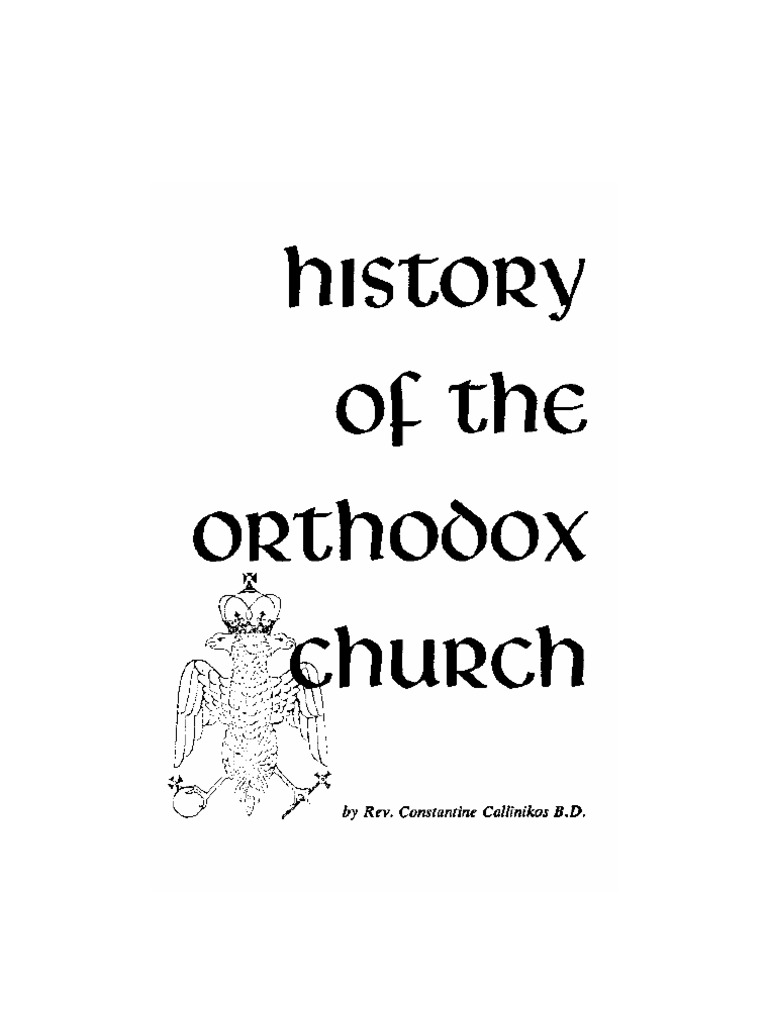The Orthodox Church, a rich tapestry of faith and tradition, can trace its founding lineage to the very roots of Christianity. This ancient communion finds its origins in the apostolic era, specifically through the teachings and actions of the apostles, particularly Saint Peter and the other apostles who spread the Gospel after the Resurrection of Christ. As one delves into the annals of history, it becomes evident that the development of the Orthodox Church is not merely an evolution of religious practices; it is a profound embodiment of divine promise, steadfastness, and cultural legacy spanning centuries.
To understand the founding of the Orthodox Church, one must first contemplate the significance of the apostles. Following the ascension of Jesus Christ, the apostles were entrusted with disseminating His teachings. They were not merely heralds of good news; they constituted the foundation stones of the Church itself. Each apostle played a critical role in establishing communities, nurturing faith, and ensuring that the essence of Christ’s message was conveyed authentically.
Saint Peter, often regarded as the foremost apostle, is traditionally considered the first bishop of Rome and, by extension, a pivotal figure in the inception of the Orthodox faith. His unwavering commitment and martyrdom underscored the profound sacrifices made by early Christians, fostering an environment where faith flourished amidst persecution. The notion of apostolic succession, which posits that bishops are the successors of the apostles, is critical in understanding the continuity of authority and teaching within the Orthodox Church. This belief reinforces the idea that the faithful are intrinsically linked to the apostles, preserving the authentic teachings of Christ through unbroken generations.
Moreover, the early Church was characterized by its communal nature. It was not a solitary endeavor; rather, Christians gathered in homes and later in formal synagogues to partake in the breaking of bread, prayers, and teachings. This fellowship engendered a rich tradition of liturgical worship, forming the backbone of Orthodox practices that continue today. The sacramental life of the Church emerged as a central tenet during this period, emphasizing the importance of baptism, Eucharist, and the Holy Mysteries as means of grace. Each sacrament encapsulates the transformative presence of Christ, enhancing the spiritual journey of the faithful from the very beginning.
Transitioning from the apostolic origins, the Byzantine Empire played a pivotal role in shaping the landscape of Orthodoxy. This era witnessed the confluence of faith and politics, where emperors and patriarchs collaborated to establish a unified Christian identity. The Edict of Milan in 313 AD, which granted religious tolerance to Christians, heralded a new age for the Church, allowing it to flourish without fear of persecution. Theophilus, the Patriarch of Alexandria, and later figures like Justinian I, showcased the intertwining of ecclesiastical authority with imperial power. Such relationships further solidified the Church’s influence across the empire.
The Byzantine legacy is visible in the theological developments that emerged during its reign. The ecumenical councils, particularly the Council of Nicaea in 325 AD, were instrumental in articulating essential doctrines of the faith. The Nicene Creed, which emerged from this council, established a unified statement of belief regarding the nature of Christ and His relationship to the Father. This seminal document remains a cornerstone of Orthodox theology, illustrating a commitment to orthodoxy amid divergent interpretations of faith that arose in subsequent centuries.
In addition to theological formulations, Byzantine culture enriched Orthodox worship through artistic expressions. Iconography and liturgical music became vital components of worship, drawing believers more profoundly into the divine mystery. Icons, revered as windows to the transcendent, invite contemplation and prayer, serving as reminders of the spiritual realities that undergird the faith. Each image tells a story, connecting the faithful to the saints and events of the past, creating a continuity that transcends time and space.
As the centuries progressed, the Orthodox Church faced external challenges that tested its resilience. The Great Schism of 1054 marked a significant watershed moment, fragmenting the unity between the Eastern and Western churches. Despite this rupture, the Orthodox Church maintained its apostolic identity, holding steadfast to its theological foundations and ecclesiastical structure. The subsequent rise of Islam and the fall of Constantinople further complicated the Church’s landscape, yet it persisted through adversity, embodying the promise of Christ’s presence within His Church.
The enduring struggle and survival of the Orthodox Church testify to an unyielding faith that has transcended time, sociopolitical upheavals, and cultural shifts. In a contemporary context, the teachings and practices of Orthodoxy offer a timeless testament to the power of faith in the individual’s life. The sacramental worldview encourages believers to perceive the divine in everyday experiences, fostering a deeper communion with God and the community.
In conclusion, the Orthodox Church’s journey from its apostolic origins to its Byzantine legacy embodies a rich narrative reflecting unwavering faith, the dynamic interplay between historical events and theological development, and the transformative power of community. As one reflects on this legacy, it becomes evident that understanding the origins of the Orthodox Church is not merely an academic exercise; it is an invitation to engage with a living tradition that continues to inspire millions today. The connection to the apostles reminds us that faith is not an isolated journey but a communal endeavor rooted in shared belief, commitment, and love. This understanding beckons believers and seekers alike to explore the depths of Orthodoxy, promising a fresh perspective on their own spiritual journeys.



